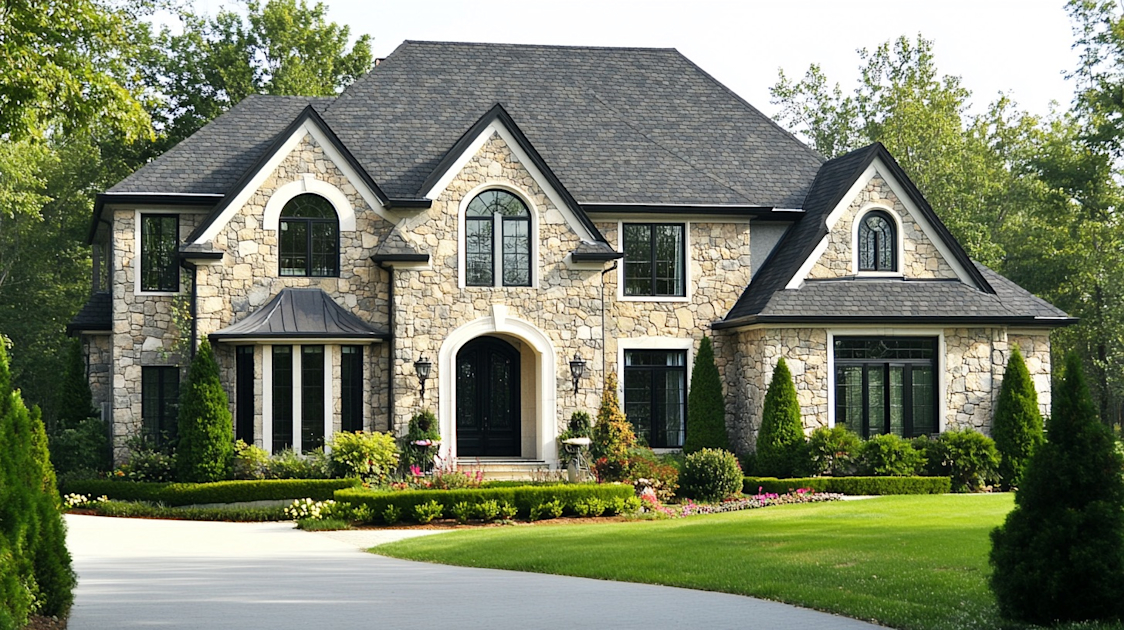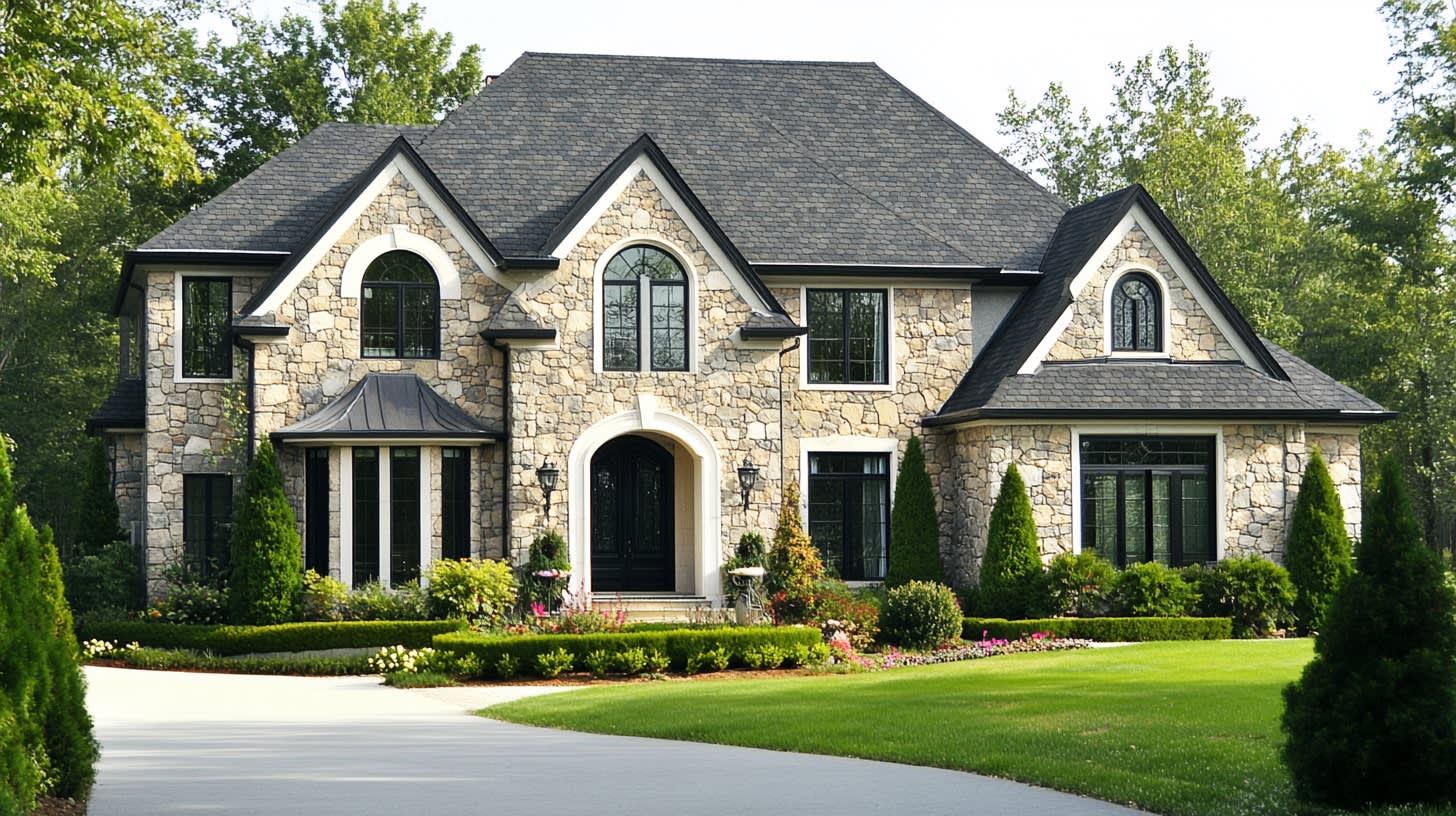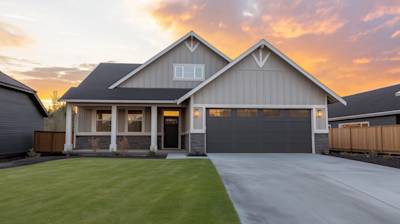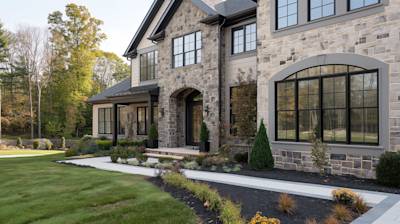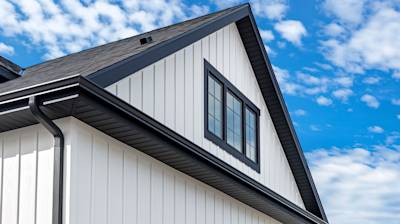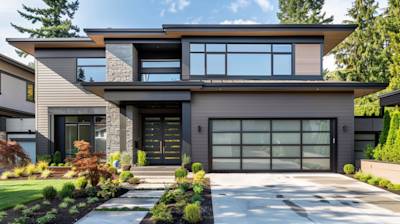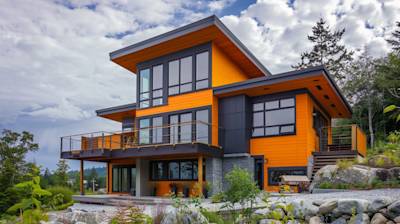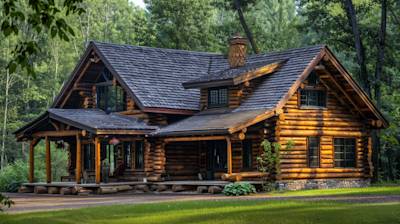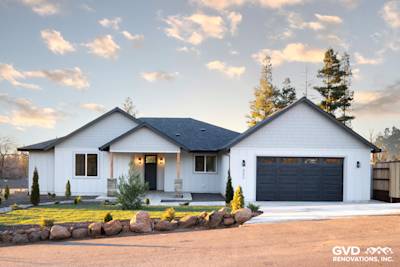Faux stone panels are steadily gaining popularity due its aesthetic and practical appeal. This comprehensive guide will delve deep into the world of faux stone panels, throwing light on its various aspects and uses in home and commercial spaces.
Understanding Faux Stone Panels
Faux stone panels, in essence, are panels that mimic the look and feel of natural stone. They're not meticulously carved out of real rock, but instead are manufactured using lightweight materials such as polyurethane. The panels are then expertly painted and styled to resemble a variety of real rock surfaces, from granite and limestone to sandstone and slate.
The Rising Demand of Faux Stone Panels
- Economical: Faux stone panels generally cost less than authentic stone. This makes them a desirable choice for many homeowners and business owners who want that natural stone look without breaking their budgets.
- Versatile: These panels come in many shapes, sizes, and designs, making them a versatile option in interior and exterior design and renovation projects.
- Easy to Install: Faux stone panels are lightweight and easy to install, saving time, labor, and cost of installation. Some faux stone panels feature an interlocking design which makes installation even more convenient.
Diverse Uses of Faux Stone Panels
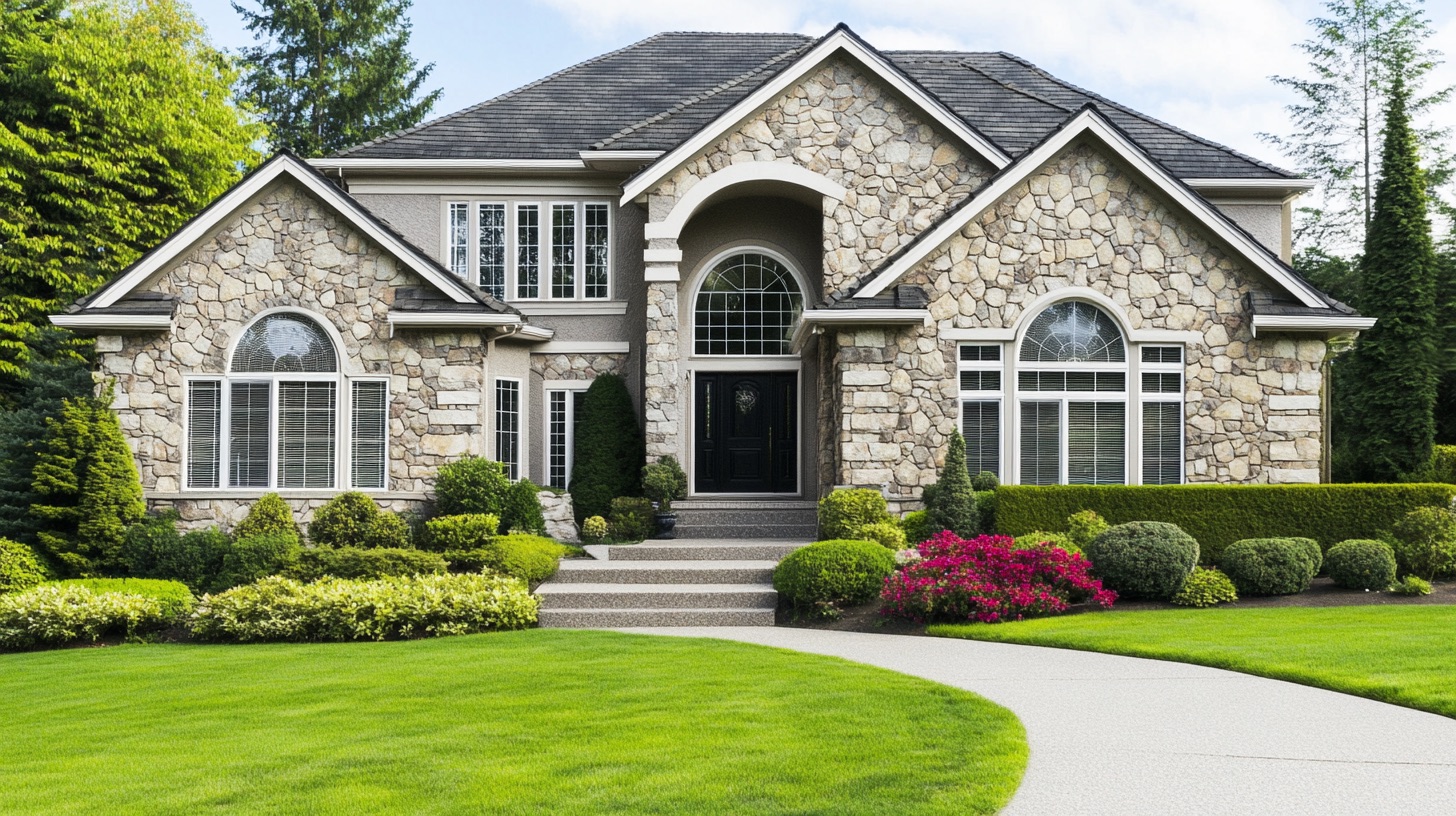
Interior Design
Faux stone panels are a wonderful tool for interior design. They can be used to create striking feature walls, fireplace surrounds, and basement upgrades. They can even be used on ceilings to create unique visual appeals.
Exterior Enhancements
Faux stone panels are also a popular choice for exterior upgrades. They can serve as an aesthetic prop for accent walls, outdoor kitchens, and even poolside landscape designs.
Commercial Spaces
In commercial spaces, faux stone panels can create inviting spaces and set the tone for businesses. They've become a hot trend in spaces like restaurants, office reception areas, and retail stores.
Insights into Installation of Faux Stone Panels
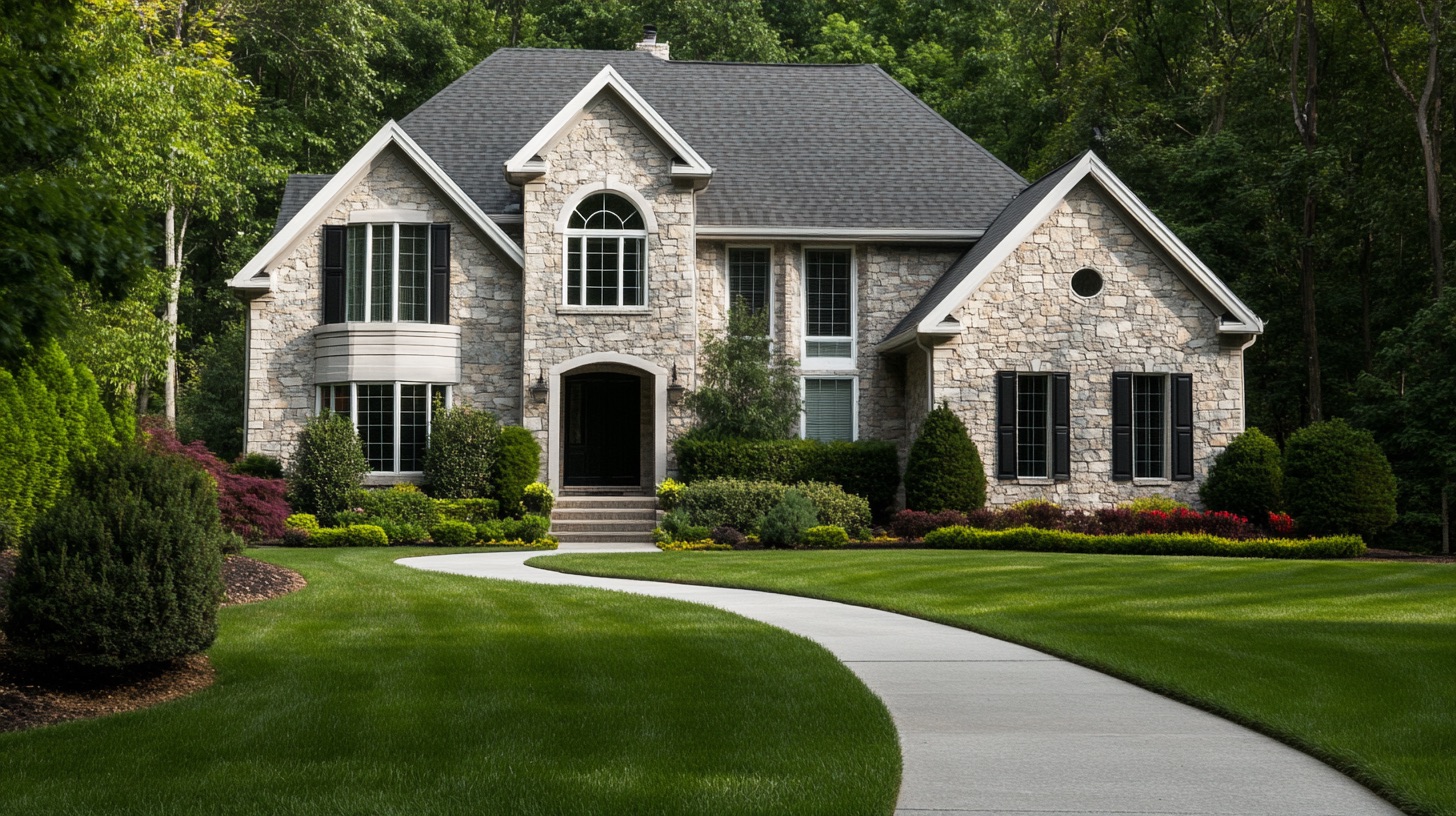
The beauty of faux stone panels doesn't end with versatility and cost-effectiveness. One of its greatest advantages is the ease with which it can be installed, making it a beloved choice by both professionals and DIY enthusiasts.
Preparing the Surface
Before you start installing your faux stone panels, it's important to ensure your surface is clean, dry, and free from loose material. A drywall surface is perfect for installation, but plywood can also be used.
Aligning the Panels
Start from a corner and work your way out. This will ensure your panels align properly and the pattern stays consistent across the space.
Cutting and Shaping
Faux stone panels can be easily cut and shaped according to your design needs. A simple saw can be used to cut the panels, and sandpaper can help remove the rough edges.
Securing the Panels
Finally, secure your faux stone panels onto the chosen surface using adhesive, screws, or nails.
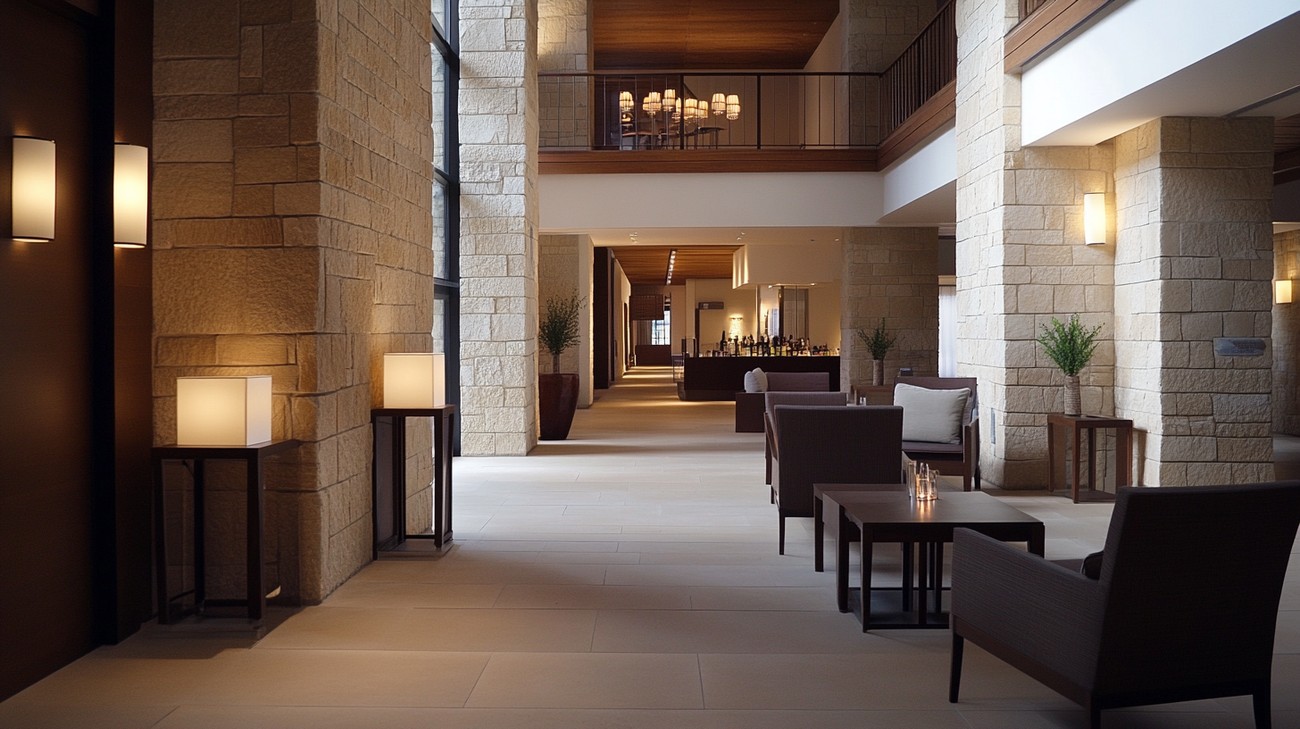
Frequently Asked Questions about Faux Stone Panels
How are faux stone panels assembled and installed?
Faux stone panels are lightweight and straightforward to handle, making them easy to install. They usually come with interlocking panels put together like puzzle pieces. They can be nailed, glued, or screwed directly onto your prepared area or wall.
Can faux stone panels be used outdoors?
Yes, faux stone panels are designed to withstand outdoor settings. They're water-resistant and have UV protection that helps maintain their original color despite exposure to sunlight or harsh weather conditions. Besides, the materials used in their construction are non-porous, preventing the build-up of unwanted moisture and growth of mold.
How realistic is the appearance of faux stone panels?
Faux stone panels are made by taking a mold from natural stones, which ensures a faithful replica of the original stone's texture and appearance. Despite being engineered, these panels capture the authentic beauty of natural stones, which make it hard to distinguish from the real thing at a glance.
Can faux stone panels be used on a fireplace?
Absolutely! Faux stone panels are classified as 'Class A' fire rated, meaning they are safe and suitable for interior projects such as fireplaces.
How to maintain and clean faux stone panels?
Maintaining faux stone panels is relatively easy. For indoor use, dusting and wiping with a damp cloth or sponge generally suffices. For outdoor applications, a mild detergent and a soft brush may be used. It's recommended to avoid harsher cleaning agents as these could damage or discolor the panels.
Can faux stone panels be painted?
Yes, faux stone panels can be painted as per your preference. You can use a latex paint primer followed by regular latex paint, or a direct-to-plastic paint. It's always recommended to test your paint on a small section of your panel to ensure satisfaction with the color and finish.
Are faux stone panels customizable?
One of the greatest strengths of faux stone panels lies in their flexibility. They can be cut into different shapes and sizes using standard woodworking tools. This means you can custom-fit these panels as per your project's requirements.
Are faux stone panels environment-friendly?
Generally, faux stone panels are considered environmentally friendly. This is because many faux stone panel brands are made with recycled materials, helping reduce landfill waste. Additionally, their longevity and durability make them a sustainable choice.
Are faux stone panels durable and long-lasting?
Yes, faux stone panels are designed to be both durable and long-lasting. They're made to resist impact, harsh weather, and the elements. Plus, they don't crack, warp or split over time like natural stone can.
What are the different styles of faux stone panels available?
Faux stone panels come in a variety of colors, shapes, and textures. Some mimic the look of natural stone, like brick, cobblestone, stacked stone, and ledgestone. You can choose the best style that fits your exterior or interior design concept.

Pros of Faux Stone Panels
Aesthetics
Visual Appeal
Faux stone panels come in a variety of styles and colors, allowing for creative mood-setting in room decor. The realistic patterns and textures add depth and interest to a space and can make it feel more connected to nature, even in an urban setting.
Versatility
These panels are suitable for both indoor and outdoor use, producing a stunning visual impact in various settings such as the fireplace, kitchen backsplash, exterior wall, or backyard fences.
Durability and Maintenance
Durable Material
Faux stone panels are constructed from high-density polyurethane, a material known for its toughness. Weather, time, and physical trauma often have little effect on them. They won't crack or chip easily, making them a lasting addition to any space.
Low Maintenance
Once installed, the faux stone panel doesn't require much upkeep. It doesn't absorb water, reducing the risk of mold and mildew damage. Plus, the color won't fade readily, so there's no need to worry about continuous re-painting or re-staining over time.
Installation and Cost
Easy Installation
Faux stone panels are lightweight and straightforward to install. They usually come in interlocking panels that even DIY enthusiasts can manage without professional help. They don't require heavy-duty tools or techniques, like real stone installations, making the entire process less time-consuming.
Affordable
When compared to natural stone, the cost of faux stone panels is significantly less. Not only are the material costs lower, but the ease of installation means saving on labor costs as well.
Cons of Faux Stone Panels
Aesthetic Limitations
Inauthentic Look
Although they mimic the look of natural stone, faux stone panels will never be an exact match. Certain observers might find the artificial nature of these panels off-putting or less appealing than the real deal.
Limited Design Options
Design choices can be somewhat limited with faux stone panels. While they are available in a variety of styles, they may not offer the same uniqueness and variation you’d find in natural stones.
Durability Concerns
Material Composition
Even though the high-density polyurethane used in faux stone panels is durable, it's still not as tough as actual stone. Over time, it may show more wear and tear than real stone.
Weather Impact
While the faux stone panels can withstand the elements to some extent, they could be susceptible to extreme weather conditions such as continuous direct sunlight or freezing winter temperatures.
Environmental Impact
Non-Biodegradable Material
Faux stone panels are made of synthetic materials that are not biodegradable, posing environmental concerns. If you're environmentally conscious, this could be a significant drawback to consider.
Production Process
The manufacturing process of faux stone panels can have a more significant environmental impact compared to natural stone, which only needs to be cut and polished.
Installation and Cost
Requires Proper Installation
Faux stone panels need to be correctly installed for them to last. Poor installation may lead to gaps, leaks, and ultimately, a wasted investment. So, even though it's a DIY-friendly project, the job might still require a professional's touch for a flawless outcome.
Not a Value-Booster
Investing in faux stone panels does not drastically boost the property's value compared to installing real stones. Therefore, if you're looking for a home improvement project with a high return on investment, faux stone panels might not be the best choice.

Myths and Misconceptions About Faux Stone Panels
The use of faux stone panels has increased in popularity over the years for their convenience, aesthetic appeal, and cost-effective nature. However, stigma and misconceptions surrounding faux stone panels continue to circulate, with some people believing that 'real' stone is always superior. This section dispels several of these myths to provide a more accurate view of this popular interior and exterior design option.
Faux Stone Panels Look Fake
One of the most common misconceptions about faux stone panels is that they look fake or distinctly artificial.
Texture
People often believe that the texture of synthetic materials can't match the natural ruggedness and variation of real stone. The reality is that many faux stone panels are manufactured to replicate the texture of natural stone closely. Most manufacturers use molds cast from actual pieces of stone to achieve these effects. Thus, faux stone panels can mimic the texture and characteristics of natural stone quite convincingly.
Color
Another argument in this vein is that faux stone panels come with unnatural colors. However, contemporary faux stone panels come in a variety of colors and finishes. Using advanced coloration techniques, manufacturers can replicate the shades found in various types of natural stone. Consequently, they can match the color palette of your project more accurately.
Faux Stone Panels are Less Durable
Another common misconception is that faux stone panels, being 'artificial', are not as durable as real stone.
Wear and Tear
While it's true that solid stone tends to be robust, faux stone panels are not far behind. Many are constructed with durable materials like high-density polyurethane, which is resistant to wear, tear, and environmental stress. They can provide many years of reliable functionality if installed correctly and well-maintained.
Resistance to Elements
People often assume that faux stone panels won't fare well against the elements. However, most faux stone panels are specially treated to be UV resistant, weather-resistant, and frost-resistant, allowing them to maintain their color and integrity even when exposed to harsh weather conditions.
Faux Stone Panels are More Expensive
A prevailing myth is that given their aesthetics and utility, faux stone panels must be more expensive than other alternatives.
Initial Cost
In actuality, faux stone panels tend to be cheaper than natural stone. Natural stone requires quarrying, shaping, and installing – all labor-intensive and costly processes. Conversely, faux stone panels are manufactured and then easily fitted into place, making them cost-effective both in terms of material and labor costs.
Maintenance Cost
Another aspect people often overlook is the cost of aftercare. Natural stone may require costly and specialized cleaning products and methods. In contrast, faux stone panels are often designed to be low maintenance, needing only simple cleaning methods to maintain their appearance.
Faux Stone Panels Impact the Environment Negatively
Finally, some people believe that faux stone panels are environmentally harmful, but in reality, the manufacturing process of these panels is generally eco-friendlier than that of traditional stone.
Resource Consumption
For instance, the quarrying and shaping of natural stone require vast amounts of resources and energy, which can lead to environmental damage. On the other hand, faux stone panels are manufactured, which is a more controlled and less resource-intensive process.
Recyclability
Moreover, many faux stone panels are made from recycled materials. They make use of polyurethane, which can be sourced from recycled plastics. After their service life, these panels can also be recycled, reducing the overall environmental impact.
As we've explored above, common myths and misconceptions about faux stone panels often reflect outdated or uninformed views. Faux stone panels today provide a cost-effective, durable, and eco-friendly alternative to natural stone, without sacrificing aesthetics or quality.
Summary
So, you're in the market to give your home or business a 'rock solid' makeover, but without the weight, cost and complexity of real stone? Faux stone panels are here to your rescue. They indeed offer a ton of advantages, from being all-weather resistant and light-weight to showcasing an authentic stone appearance. A simple wipe down with a damp cloth is also all it takes to keep them looking fresh and new.
Few things can compare to the dramatic, awe-inspiring aesthetic that faux stone panels bring. Their unique textures and colors make them a perfect fit for any room or any style. Plus, their easy installation allows for vertical or horizontal orientation, inside corners, or even above a fireplace. Faux stone panels significantly cut down on labor costs and installation time, granting a quicker route to your dream space.
In terms of durability, these simulated beauties stand out too. Faux stone panels can stand up to harsh climates and resist fading under the sun. They look fantastic year-round, and with their excellent affordability, they’re a great way to upgrade your space without breaking the bank. A wide spectrum of stick-on, peel-and-stick, or clip together options even makes them suitable for DIY projects. With faux stone panels, your home improvement dreams are just a stone's throw away!
About GVD Renovations & Remodeling
GVD Renovations & Remodeling is a Roseville, CA-based company that specializes in exterior and interior home renovation projects. With extensive industry experience and a passion for superior craftsmanship, our team takes pride in transforming homes into spaces that not only look stunning, but also function perfectly for each homeowner's lifestyle. From kitchen remodels to whole house renovations, GVD Renovations & Remodeling puts a premium on client satisfaction, making sure every detail aligns with your vision and exceeds your expectations. Trust us to turn your home into the dream home you've always wanted.
Tags: home improvement, interior design, faux stone panels,



